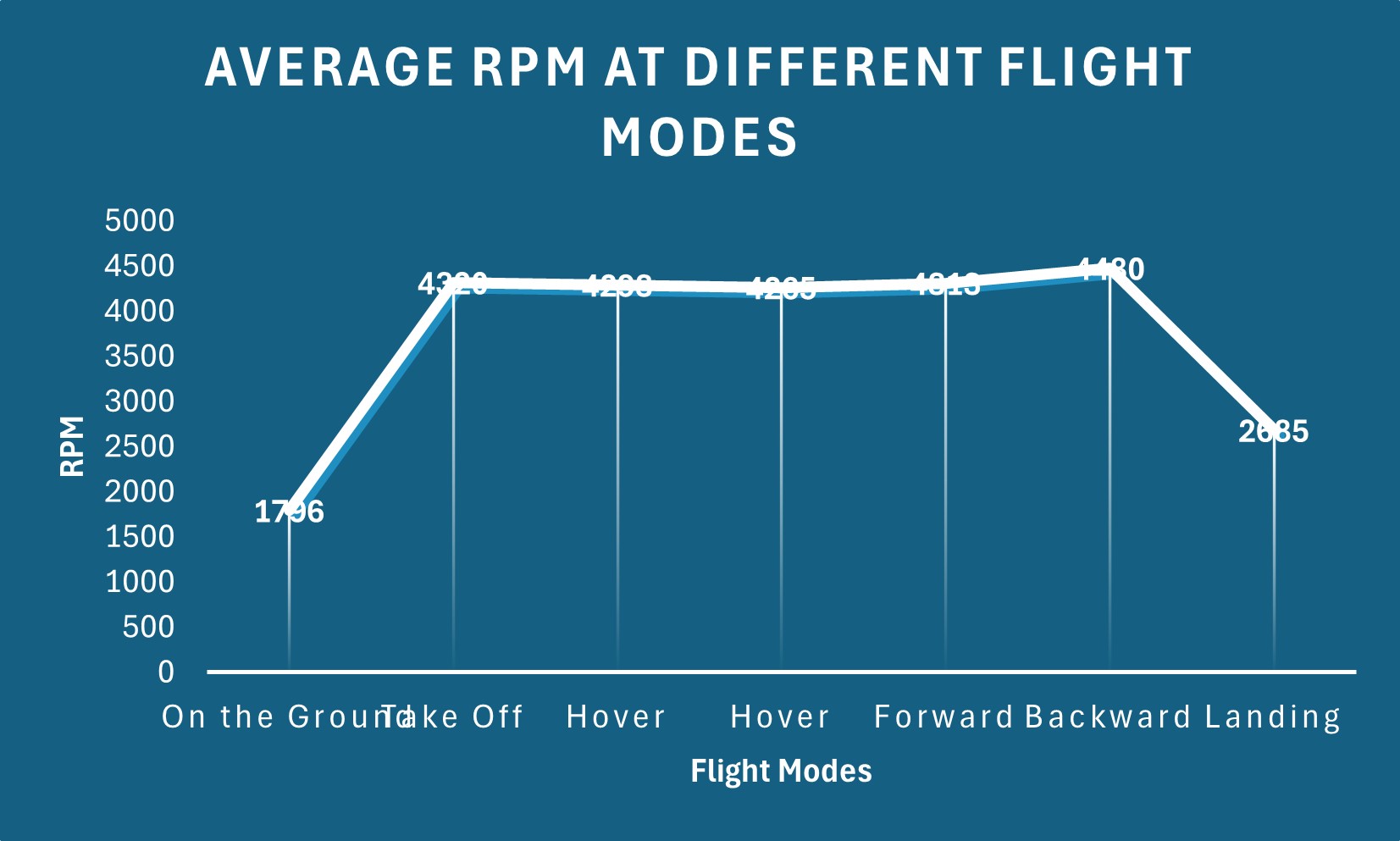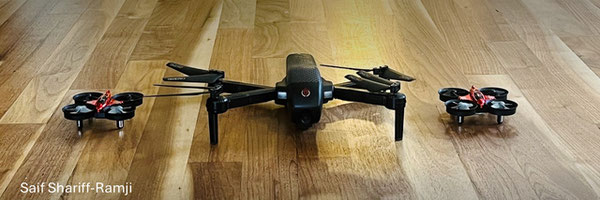Drone Dynamics
Grade 6
Presentation
No video provided
Hypothesis
My hypothesis is that the rotor speed of the drone will change at different flight modes depending on the amount of thrust and lift it needs to move. I think the speed of the rotors will be faster when more thrust and lift are needed like at take off.
Research
What is a drone?
A drone is an unmanned aerial vehicle also called UAVs. They fly on their own using some kind of computer software program or motherboard that controls the flight plans.
Drones have many rotors, often four on quadcopters that generate thrust to lift the drone, as well as control its movement through varying speeds and directions.
How do drones fly?
Drones use aerodynamic to fly. Aerodynamics is when something has movement in the air and how the air affects that movement. Every thing that flies is affected by four aerodynamic forces:
- Lift
- Thrust
- Drag
- Gravity
Lift is what pushes the drone upwards. For drones, the movement of the rotors generates the lift to fight the force of gravity and create a downward flow of air. The rotors are designed to spin at high speeds. The downward flow of air creates an upward force of the drone, which allows it to lift off the ground.
Drones also need thrust to move forward. The rotors which use an electric motor to spin makes a forward force to move the drone in a forward direction. This is called thrust and is what moves the drone forward. The direction of the thrust created by the rotation of the rotars helps to lift the drone as well. The drag slows the drone down and gravity pulls the drone down.
How does Newton's Third Law apply to a Drone?
Newton’s Third Law is that for every action, there is an equal and opposite reaction. The movement of the drone's rotors causes lift and thrust which pushes air downwards allowing the drone to lift. The lift is what pushes the drone up against gravity.
The thrust produced by the rotors must be more then the weight of the drone for it to lift. As power and rotor speed increases, the drone can lift off.
How do you measure the speed of a drone?
The speed of the rotor is measured in Revolutions Per Minute (RPM)
For a small drone, the normal RPM is in the range of 5,000 to 20,000 RPM, depending on the type of drone and size.
Variables
Controlled
- Use the same drone and the same operator (me)
- Test in the same environment (indoor at my house)
- Use the same tachometer
Independent
- Change the Flight Motion of the Drone
- (1) take off
- (2) hover at 5 feet
- (3) hover at 12 feet
- (4) moving forward
- (5) moving backward
- (6) landing
Dependent
- Rotor speed in RPM
Procedure
I want to test 6 Fligh Modes:
(1) take off
(2) hover at 5 feet
(3) hover at 12 feet
(4) moving forward
(5) moving backward
(6) landing
For each of the Flight Modes that I will test, I will follow these procedures:
-
-
- Charge drone battery to full
- Place reflective film on one rotor of the drone - required for tachometer to measure
- Place the drone in the mode I want to test - Take Off, Hover, or Manual Movement
- Test the drone in the same location in my house. Testing indoors will prevent wind conditions from being an issue.
- Use the tachometer to measure the rotor speed (RPM)
- Record the RPM in my log book
- Repeat 3 times for each mode
-
Observations
I had to run the drone a few times before I learnt how to get an accurate measurement from the tachometer. Sometimes it was very hard to get the reading from the tachometer. Once I got the measurements I observed that the rotor speed was faster when the drone was taking off compared to landing. The rotor speed was similar when the drone was in hover mode, regardless of the height I was flying the drone at. The rotor speed was a little faster when I moved the drone in a backward direction compared to forward direction. Overall, the rotor speeds were very similar during hover mode and while moving. Table 1 shows the data I collected in my tests.
Table 1: RPM at Different Flight Modes
|
|
On the ground (not moving) |
Take Off from ground to 5 feet |
Hover (12 feet) |
Hover (5 feet) |
Moving Forward |
Moving Backward |
Landing |
|
Test 1 |
1859 |
3809 |
4361 |
4348 |
4335 |
4501 |
2705 |
|
Test 2 |
1812 |
4435 |
4212 |
4333 |
4268 |
4448 |
2616 |
|
Test 3 |
1821 |
4263 |
4237 |
4232 |
4337 |
4501 |
3388 |
|
Test 4 |
1769 |
4262 |
4252 |
4262 |
|
4471 |
2434 |
|
Test 5 |
1745 |
4262 |
|
|
|
|
|
|
Test 6 |
1772 |
|
|
|
|
|
|
Analysis
Using the data I collected, I made a graph showing the rotor speed (RPM) against each flight mode.
Graph 1 - RMP at Different Flight Modes

I also took the average of the data I collected and plotted it on a graph.
Graph 2 - Average RPM at different Flight Modes

- I found that the rotor speed was faster at take off because the drone needed more lift to take off compared to at landing. To get more lift, the rotors had to spin faster. According to Newton's third law, with every motion there is an equal and oposite motion. So when the drone take's off its going against gravity so it will need more power. During takeoff is when the drone accelerates to maximum speed. Higher RPMs are required to overcome air resistance, generate sufficient thrust, and maintain stability during fast movement.
Conclusion
My conclusion is that for drones, the speed of the rotor changes when the motion of the drone changes. When the drone needs more lift or thurst, the rotars spin faster. I have always been very intereted in NASA spaceships travelling against gravity. This project helped me learn that thrust has to be powerful enough to carry the weight of the spaceship.
Application
Drones can be used for lots of good purposes. The use of drones started for military but now we use drones for fun and to help. For example, drones are used to help place tree pods in remote areas where people cannot go that have suffered from forest fires.
Flash Forest is a Canadian company that uses drones to plant trees to help regrow forests that were burnt down by forest fires. I will be volunteering to help Flash Forest plant trees in Canada. Their website is Flash Forest
Sources Of Error
I had errors in my test and wasn't able to get readings for all my test. In two of my tests, I think my readings were off so I did not include them in the average.
Citations
Acknowledgement
I want to thank my mom for her help.

